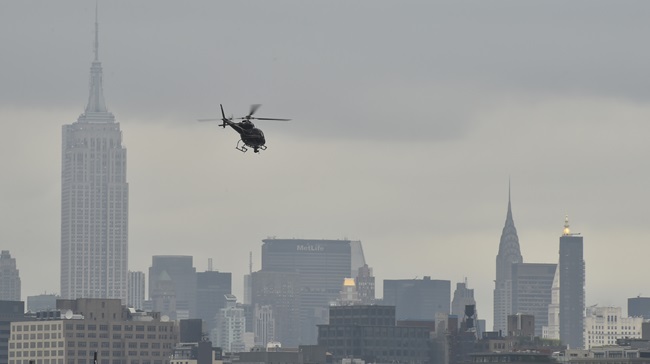AOPA, EAA file medical exemption petition
FAA asked to consider education in place of medical regulation
AOPA and EAA on March 20 filed a petition for exemption asking the FAA to extend to all pilots flying recreationally the freedom to fly, in certain circumstances, utilizing the knowledge gained by taking an annual education course to assist them with making an assessment of their fitness to fly in lieu of requiring a medical certificate.
The petition for exemption, developed in close coordination between the organizations and the hundreds of thousands of pilots they represent, asks the FAA to allow pilots to operate noncommercial flights under day VFR in single-engine aircraft with 180 horsepower or less, four seats or fewer, fixed gear, and with a maximum of one passenger (among other parameters laid out in the request). The medical standard would be similar to the standard sport pilots have used safely for seven years and counting but would leverage the addition of an educational course, and would allow many pilots to continue to operate aircraft with which they are most familiar.
Both organizations believe the exemption would increase safety, reduce costs, and help stem the decline of the pilot population.
The petition for exemption seeks creation of a medical safety educational course that would be developed by the AOPA Foundation’s Air Safety Institute and available online, free of charge. The course would educate pilots on medical considerations beyond basic flight physiology and includes medical concerns that may be reviewed in the medical application process—making them better able to evaluate their medical fitness before each flight.
Pilots would establish their baseline of health with a driver’s license, just as sport pilots have done for seven years—without a single accident attributed to a medical condition in flight.
Drawing on experience gained from past attempts to eliminate the third class medical requirement, the organizations propose an exemption which calls for a strategic approach to mitigating risk. As requested, the exemption seeks to enhance safety by providing new education and removing the disincentive to seek treatment based on fear a medical visit could compromise flying status.
This exemption would also help mitigate the increased risk that may occur naturally when pilots transition into unfamiliar (and sometimes distinctly different) aircraft in order to exercise sport pilot privileges and operate with a driver’s license in lieu of a medical. The sought-after exemption gives those pilots an alternative that may allow them to continue to fly aircraft in which they have familiarity and experience.
A 2009 AOPA survey found 72 percent of the members responding expressed a strong interest in changing the third class medical requirement for pilots flying recreationally. “Our petition offers substantial economic savings to pilots and the U.S. government,” said AOPA President Craig Fuller. “A conservative estimate shows a savings of $241 million for pilots and $11 million to the federal government over 10 years.”
The petition will also help stem the decline in general aviation users, supporting small airports, along with the businesses—and jobs—that depend on those airports.
For many pilots whose medical conditions do not compromise safety of flight but complicate the certification process, it could make the difference between extending their career and selling their aircraft. One such pilot is Dan McKeeman, who flies a 180-hp Zenith CH 801 that he spent five years building out of a small airport in Simsbury, Conn. McKeeman said in February that the process of renewing his third class medical has grown prohibitively cumbersome, and he worries that the FAA will reject the request, or impose restrictions that would prevent him from using the exception for the daytime VFR flight that he practices exclusively.
“That’ll probably be the end of my flying career if that happens,” McKeeman said.
While the exemption would not apply to commercial operations—aircraft flown for hire or in furtherance of a business—that restriction is irrelevant to thousands of pilots, including McKeeman.
“This initiative will preserve the freedom to fly by reducing a significant hurdle in the lives of many pilots and entrants into general aviation while maintaining or enhancing safety,” said EAA President Rod Hightower. “It would also greatly increase the number of aircraft available for pilots flying strictly for recreation and encourage pilots to continue to fly in aircraft in which they are already familiar.”
The aircraft that would covered by the proposed exemption include single-engine, fixed-gear aircraft with a maximum of 180 hp and four seats, an incremental increase over light sport aircraft operating with two seats and up to 1,320 pounds gross weight (or 1,430 pounds for seaplanes). The petition for exemption legally applies to members of AOPA and EAA, though the organizations noted in the petition that there would be no objection to the FAA extending such privileges to nonmember pilots. Thousands of pilots have signed up for email updates, and detailed information has been compiled by AOPA Online on a page that also includes a link to sign up for notifications and progress reports.
It is unknown how long the FAA will require to review the request, and both organizations will work closely to support it.



